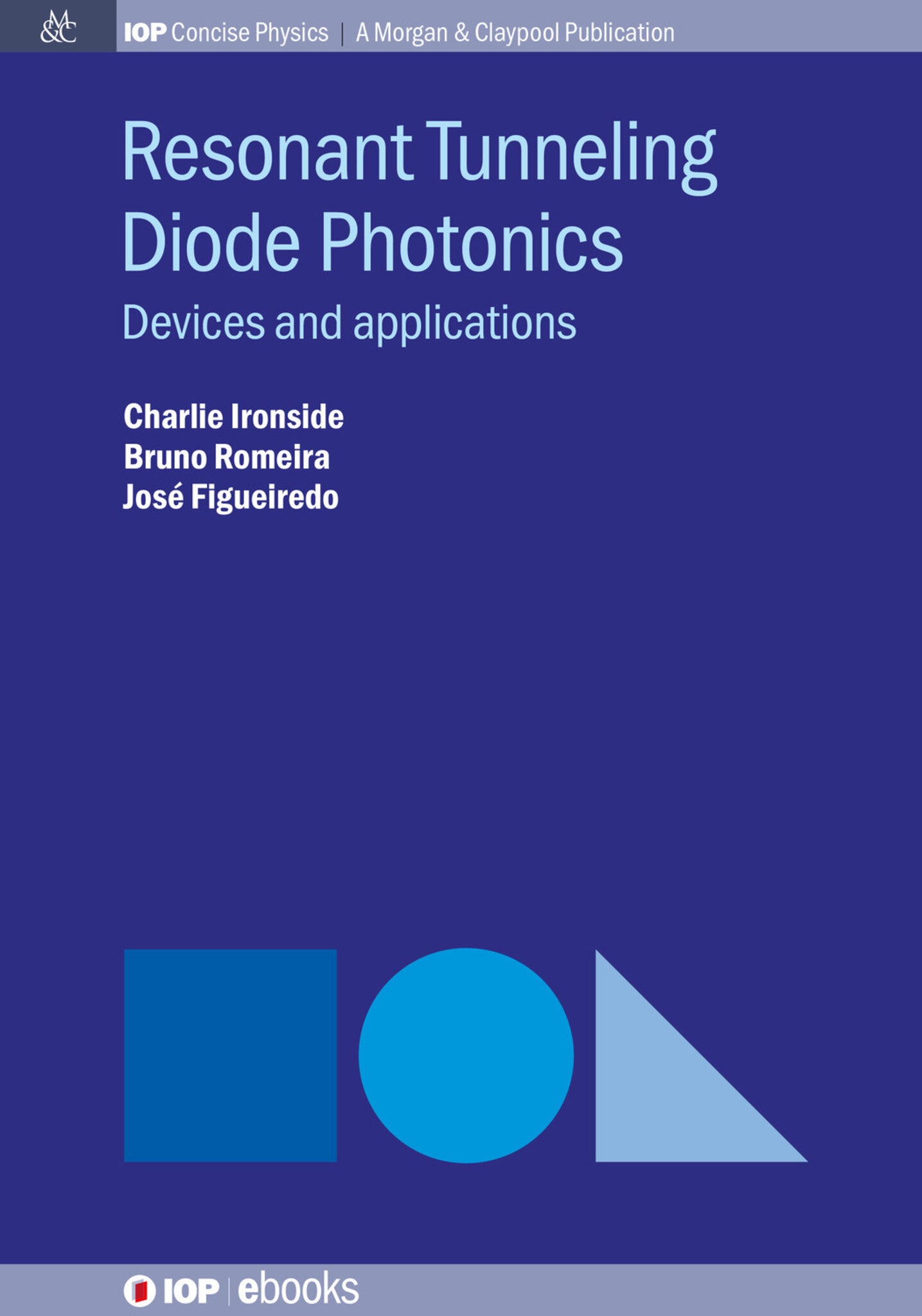We're sorry. An error has occurred
Please cancel or retry.
Resonant Tunneling Diode Photonics

Some error occured while loading the Quick View. Please close the Quick View and try reloading the page.
Couldn't load pickup availability
- Format:
-
05 November 2019

This book brings together two broad themes that have generated a great deal of interest and excitement in the scientific and technical community in the last 100 years or so: quantum tunnelling and nonlinear dynamical systems. It applies these themes to nanostructured solid state heterostructures operating at room temperature to gain insight into novel photonic devices, systems and applications.

SCIENCE / Physics / Optics & Light, Optical physics, Materials / States of matter

We acknowledge the
help and support of numerous funders who provided encouragement and resources
that help progress the work reported in this book. The funders include the
Engineering and Physical Science Research Council, (EPSRC), the European
Commission research councils and Pond Ventures. Bruno Romeira acknowledges
the Marie Curie COFUND Programme— NanoTRAINforGrowth II. Bruno Romeira and
José Figueiredo acknowledge the European Commission through the
H2020-FET-OPEN Project ‘ChipAI’ under Grant Agreement 828841.
Table of Contents
1. Chapter 1: Introduction
1.1. Introduction
1.2. Quantum tunneling devices
1.3. Negative differential conductance
1.4. Nonlinear dynamics
1.5. Optoelectronic integrated circuits (OEICs)
1.6. Outline
2. Chapter 2: Resonant Tunnelling Diode – Electrical and Optical properties
2.1. Introduction
2.2. Differential negative conductance
2.2.1. High-frequency response
2.3. Optical properties: Optical waveguiding, electroabsorption, photoconduction and lasers
2.3.1. Optical waveguiding
2.3.2. Electroabsorption
2.3.3. Photoconductivity and photodetection
2.3.4. Optical emission
2.4. Conclusions
3. Chapter 3: Resonant Tunnelling Diode – Electro-absorption Modulators
3.1. Introduction
3.2. Electro-optic and electro-absorption modulators
3.2.1. Electro-refraction modulators
3.2.2. Electro-absorption modulators (EAMs)
3.3. Resonant tunnelling diode EAM device
3.4. RTD-EAM operation principle
3.5. GaAs RTD-EAM operation at 900 nm
3.5.1. Device implementation and low frequency characterization
3.5.2. Optical modulation under applied external signals
3.5.3. Optical modulation enabled by self-sustained oscillations
3.6. InGaAlAs/InP RTD-EAM operation at 1550 nm
3.6.1. Device structure and low frequency characterization
3.6.2. RTD-EAM high frequency characterization
3.7. Conclusions
4. Chapter 4: Resonant Tunnelling Diode – Photo-detectors (RTD-PD)
4.1. Introduction
4.2. RTD-PD concept and principle of operation
4.3. RTD-PD implementation and characterization
4.4. Optical controlled high-frequency RTD-PD oscillators
4.5. Design guidelines of high photo-detection bandwidth RTD-PDs
4.6. Excitability detectors
4.7. Conclusions
5. Chapter 5: Resonant Tunnelling Diodes –Laser diodes (RTD-LD) (Charlie & Bruno)
5.1. Introduction
5.2. Hybrid RTD laser circuit
5.2.1. Model of the RTD-LD hybrid circuit
5.3. Integrated RTD laser circuit
5.4. Conclusions
6. Chapter 6: Nonlinear dynamics of RTD oscillators (Bruno)
6.1. Introduction
6.2. Photonic synchronisation and chaos
6.2.1. Injection locking
6.2.2. Period-adding bifurcation
6.2.3. Quasi-periodic route to chaos
6.3. Excitable spiking in neuromorphic photonic devices and systems
6.3.1. Excitability (neuron-like) dynamics
6.3.2. Spiking and bursting dynamics
6.3.1. Bistable dynamics
6.4. Conclusions
7. Chapter 7: Resonant Tunnelling Diodes optoelectronic oscillators (RTD-OEO) (Bruno)
7.1. Introduction
7.2. Optoelectronic oscillator (OEO)
7.3. Photonic integrated RTD-OEO
7.3.1. Single-optical fibre loop
7.3.2. Dual-optical fibre loop
7.3.3. Time-delayed feedback Liénard oscillator model
7.4. Regenerative RTD-OEO
7.5. Conclusions
8. Conclusions
References



